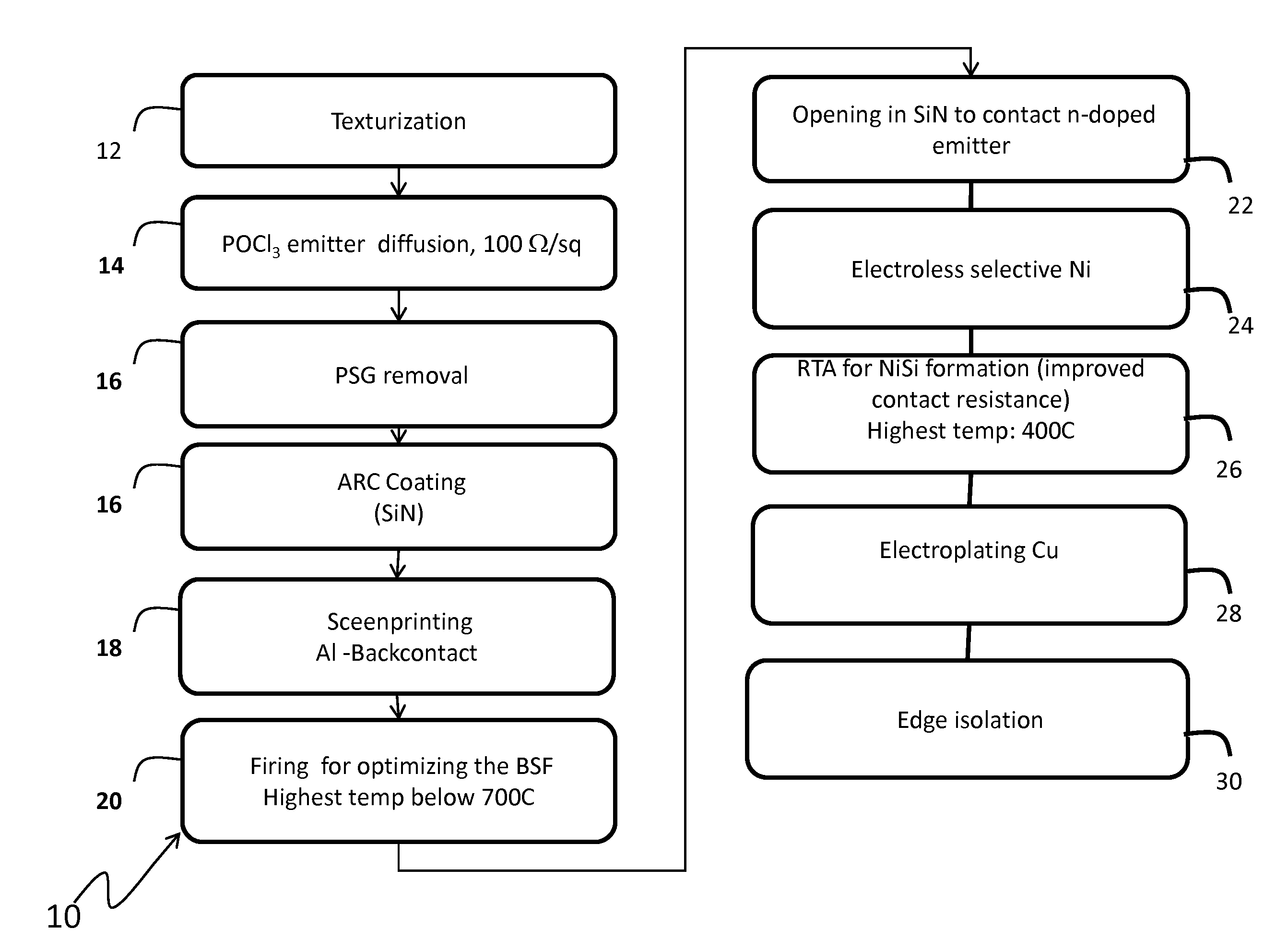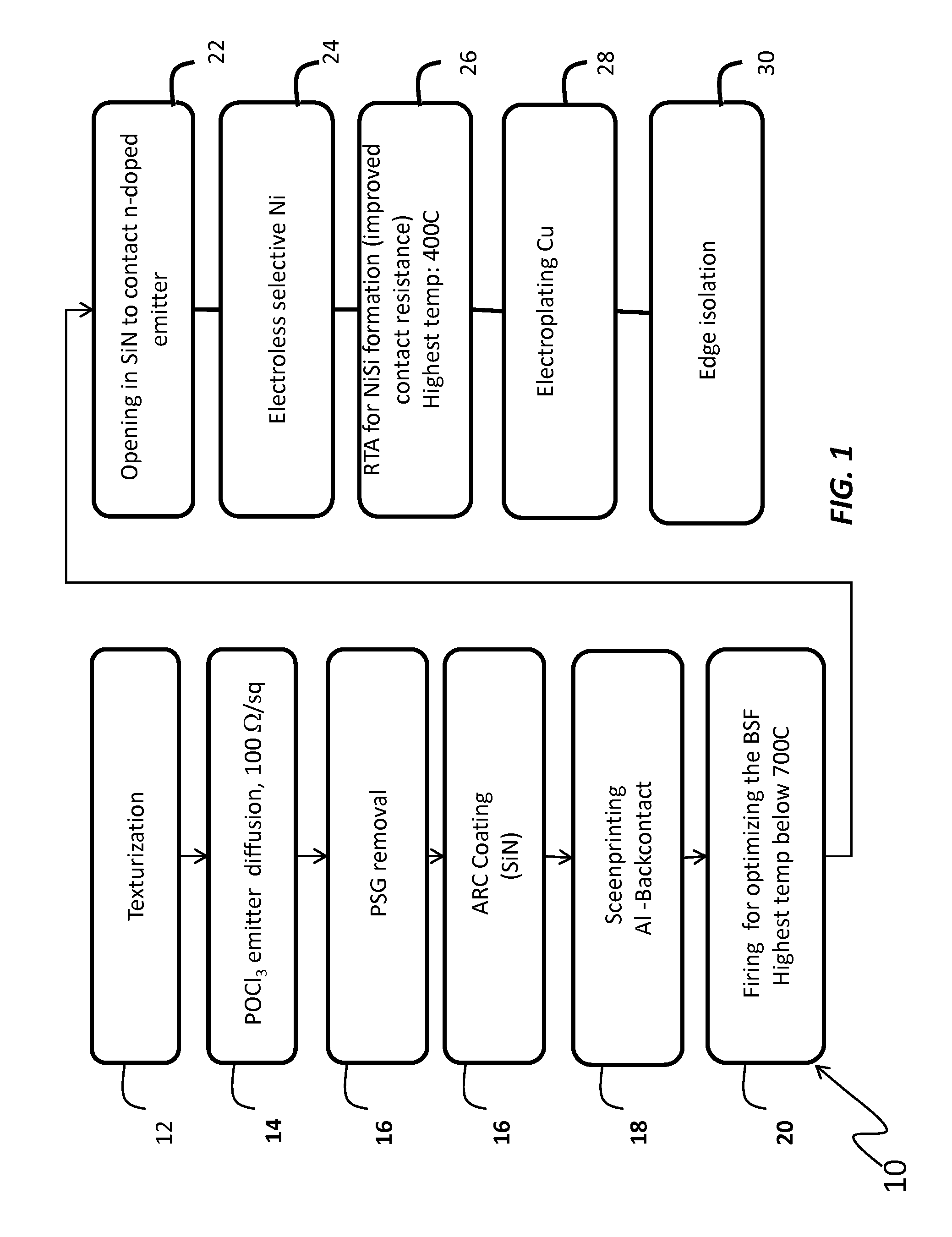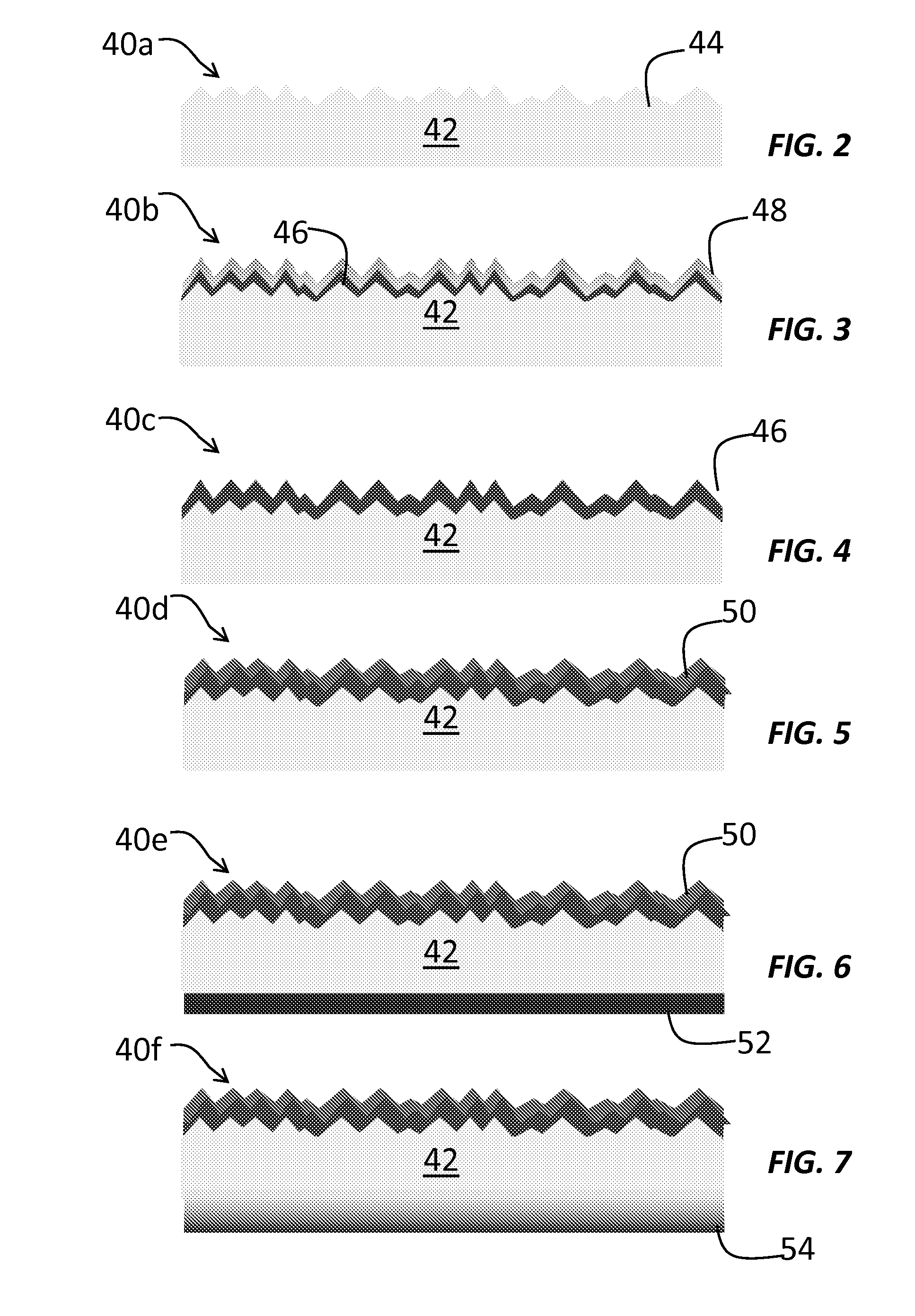Solar cell and fabrication method using crystalline silicon based on lower grade feedstock materials
a technology of crystalline silicon and feedstock materials, applied in the field of photovoltaic devices, can solve the problems of high serial resistance and/or low shunt resistance, inability to achieve the desired results with a single process, and inability to meet the requirements of the application, etc., to achieve the effect of increasing the output of electricity, low resistance and increasing the efficiency of solar energy technologies
- Summary
- Abstract
- Description
- Claims
- Application Information
AI Technical Summary
Benefits of technology
Problems solved by technology
Method used
Image
Examples
Embodiment Construction
[0030]In the present specification, an embodiment showing a singular component should not be considered limiting; rather, the invention is intended to encompass other embodiments including a plurality of the same component, and vice-versa, unless explicitly stated otherwise herein. Moreover, applicants do not intend for any term in the specification or claims to be ascribed an uncommon or special meaning unless explicitly set forth as such. Further, the present invention encompasses present and future known equivalents to the known components referred to herein by way of illustration.
[0031]The method and system of the present disclosure provide a method for forming a low resistance metallization in the formation of a solar cell. Although the present disclosure has particular application in solar cells formed using UMG silicon, it should be understood that the present disclosure may further apply to any form of silicon, including float zone silicon, Czochralski silicon, magnetic Czoc...
PUM
| Property | Measurement | Unit |
|---|---|---|
| temperature | aaaaa | aaaaa |
| temperature | aaaaa | aaaaa |
| temperature | aaaaa | aaaaa |
Abstract
Description
Claims
Application Information
 Login to View More
Login to View More - R&D
- Intellectual Property
- Life Sciences
- Materials
- Tech Scout
- Unparalleled Data Quality
- Higher Quality Content
- 60% Fewer Hallucinations
Browse by: Latest US Patents, China's latest patents, Technical Efficacy Thesaurus, Application Domain, Technology Topic, Popular Technical Reports.
© 2025 PatSnap. All rights reserved.Legal|Privacy policy|Modern Slavery Act Transparency Statement|Sitemap|About US| Contact US: help@patsnap.com



